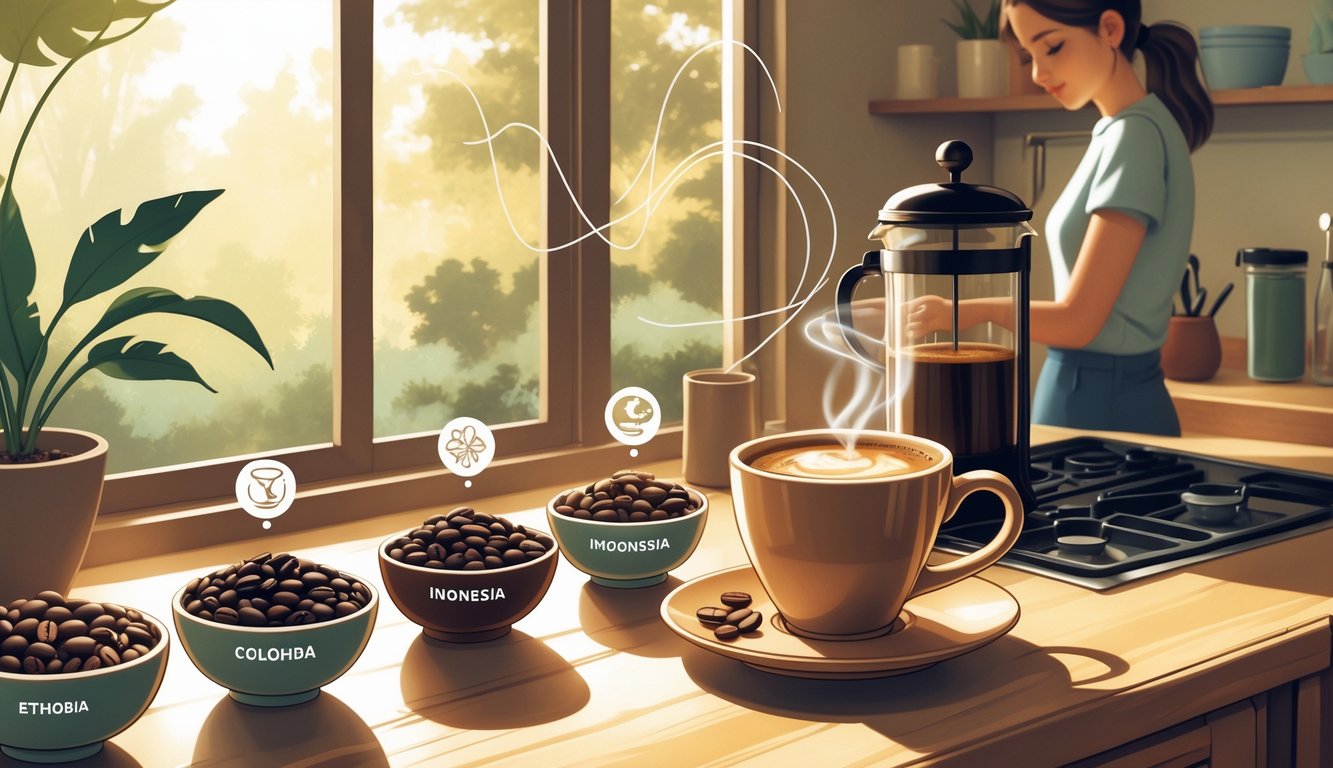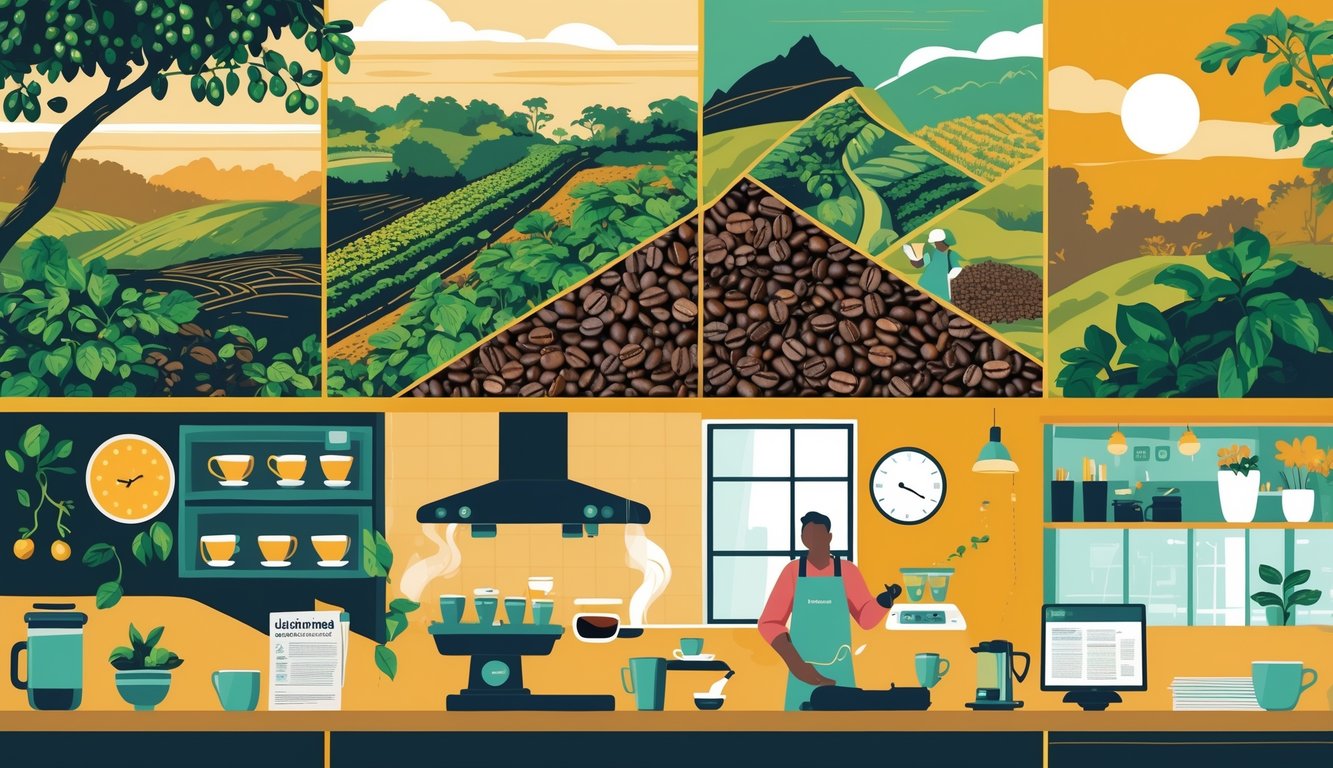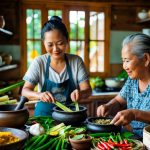
Every single morning, I get sucked into this weirdly elaborate coffee routine—like, I can’t even remember how I got here. It’s always the beans. I’ll grab this random bag of Ethiopian Yirgacheffe—suddenly, it’s all floral, citrusy chaos in my cup, and breakfast? Who cares. Oatmeal used to be enough. Now it’s like, if the beans aren’t perfect, the day’s already off. Where your beans come from? It absolutely hijacks the taste, and sometimes, the entire mood of your morning. Not even exaggerating. One day it’s all zingy and bright, next it’s dark, moody, borderline existential—looking at you, Sumatran beans. Consistency? Never heard of her. But maybe that’s the fun.
But seriously, why does swapping Colombian Supremo for Jamaican Blue Mountain turn the whole cup from caramel to this weirdly mellow, almost spa-like situation? Like, is this supposed to be “meditation in a mug”? And nobody warns you the entire thing falls apart if you miss the water temp by, like, two degrees. National Coffee Association says over 62% of Americans drink coffee every day—so are we all just pretending bean origin doesn’t mess with our heads? Every time I try a new regional blend, I end up standing there, wasting time, coffee in hand, forgetting my toast and blowing off half my calendar.
Maybe “perfect” coffee is a lie. Maybe chasing beans from volcanic slopes or rain-soaked valleys is just my way of making mornings less boring. Barista friend once told me—check your brew ratio, because Brazilian beans? Totally different beast than Kenyan. Nobody on Instagram tells you that. Sometimes I think my entire morning routine is held together by caffeine and a barely-there sense of adventure. Science says bean origin changes flavor, but calling it a “simple ritual” barely scratches what’s actually happening in my kitchen at 6:45 a.m.
The Global Journey of Coffee Beans

Where did my coffee obsession even start? Panama? Kenya? Peru? Doesn’t matter—every bag is basically a weird little postcard from the tropics, except my kitchen’s become this accidental import hub for jittery energy.
Coffee Growing Regions and the Bean Belt
So, over 70 countries grow coffee, but only this narrow “Bean Belt” strip actually counts if you want your brain to work before 9 a.m. Brazil’s everywhere, flooding the world with arabica, but Ethiopia’s beans? Always sharper, never predictable, kind of like they’re hiding something.
The equator is apparently coffee’s only real address. Indonesia, Colombia, Vietnam—whole economies revolve around altitude, volcanic soil, and latitude. Honduras supposedly outpaces Guatemala now, but ask a barista which one they’d actually drink and you’ll get a rambling answer that never lands anywhere.
Here’s the thing: coffee regions are climate passports. Côte d’Ivoire, Papua New Guinea, Rwanda—each one just dumps its own attitude in my cup. Sometimes I want floral, sometimes I get “earthy,” sometimes I get a stomachache. No warning.
How Climate and Rainfall Shape Coffee
I don’t track rainfall in Sumatra for fun (who does?), but every barista acts like we should all have a weather station in the kitchen. Still, it matters. Beans need steady temps around 70°F, just enough rain, and shade-grown? Supposedly less stress, better flavor. I’ll buy that, I guess.
If the rain’s late, acidity drops, yields tank, and suddenly my “fruity” cup tastes like old socks. Elevation’s another wild card: above 1500 meters, coffee’s bright and clean; near sea level, it’s just…meh. Nobody told my neighbor with his “French roast” that. The tropics argue with the weather every year, and climate folks love to map it all out, but does anyone actually taste the difference? Sometimes. Sometimes not.
Central American beans get citrusy, Sumatran ones turn spicy. Sun, rain, soil—if any of it’s off, the coffee’s just another bland cup you forget by noon.
Understanding Coffee Production and Fair Trade
There’s real sweat and heartbreak in every bag. Most of the world’s 25 million coffee farmers are thousands of miles from my French press. Fair trade? I thought it was a sticker, but apparently it’s a whole negotiation circus. Sometimes it works, sometimes it doesn’t.
I never trust “direct trade” labels. Are Peruvian farmers actually winning, or is it just marketing? I read that global coffee exports hit 10 million tons (ICO), and fair trade rules say growers get a floor price and a bonus if the market’s good, but I’ve seen Ethiopian co-ops lose their shirts anyway. Exporters play favorites, certification costs pile up, and nobody seems to win.
Best move? Ignore the buzzwords unless you’ve actually seen the receipts. Or at least find roasters who post their sourcing and profit splits. If a farmer’s name is on the bag, they’re probably getting a better deal than the anonymous blends. And traceability? It’s a pain. I tried uploading farm paperwork once—WiFi crashed, nothing got done, gave up.
Types of Coffee Beans Around the World

Everyone’s got opinions about Arabica, Robusta, and those weird Liberica beans (I’ve never seen them in real life, have you?). But honestly, the region and how it’s processed mess with my mornings way more than any overpriced gadget.
Arabica vs. Robusta: What’s the Difference?
The Arabica vs. Robusta “debate” just never dies. Arabica? Smooth, sometimes sweet, maybe a little nutty if you get lucky—makes up nearly 70% of coffee out there, so yeah, it’s everywhere (source). Lower caffeine means less jitters, but nobody tells you stale Arabica is just sad.
Robusta? It’s the wild one—double the caffeine, more bitter, kind of earthy, and apparently immune to everything. Cheap, sturdy, but if you did a blind taste test, would you even know? I doubt it. A café owner in Jakarta told me, “Robusta’s for espresso shots and desperate mornings.” Not wrong. The crema sticks around forever.
Price? Robusta’s way cheaper, so guess what’s in your supermarket “dark roast.” Not a shock.
Spotlight on Colombian Coffee
Colombian coffee—people always rave about “smoothness,” but what does that even mean? Try explaining nutty-sweet, light acidity, and creamy body to someone who drinks instant. Colombia’s got nearly 500,000 coffee families (National Federation stats), and they still hand-pick beans. That’s part of the magic.
Regions like Huila or Nariño, up in the mountains, throw in their own fruity, floral twists. Some importer once told me “best drip coffee” lists always sneak in a Colombian single origin, especially for people who don’t want their coffee to punch them awake.
Prices jump for specialty stuff, but “100% Colombian” instant still clogs supermarket shelves. The jump from that to fresh-roasted Huila is like going from flip-flops to Italian boots. Still, every bag from Bogota promises the world, and half the time it’s just okay.



